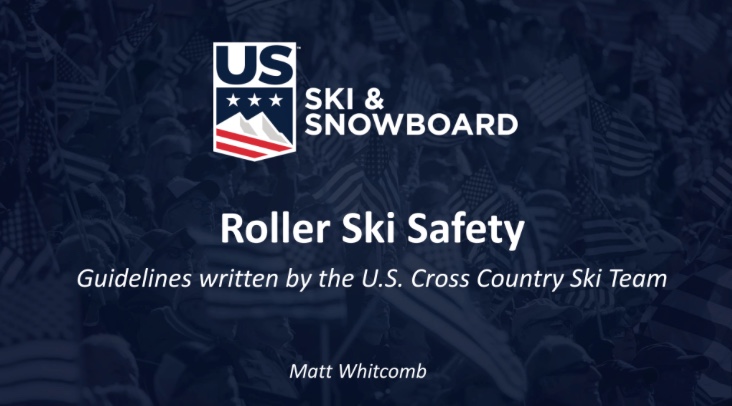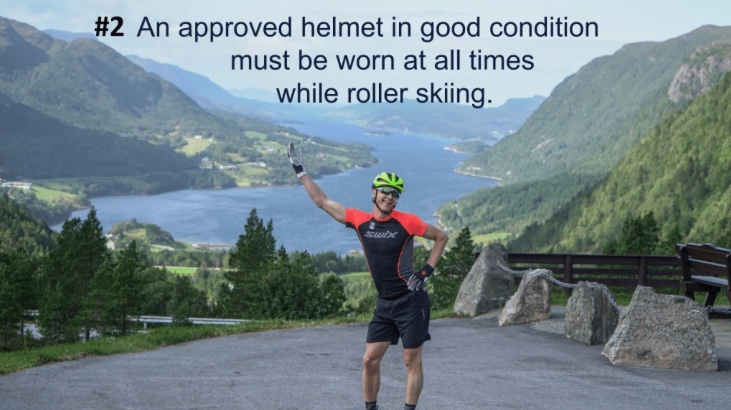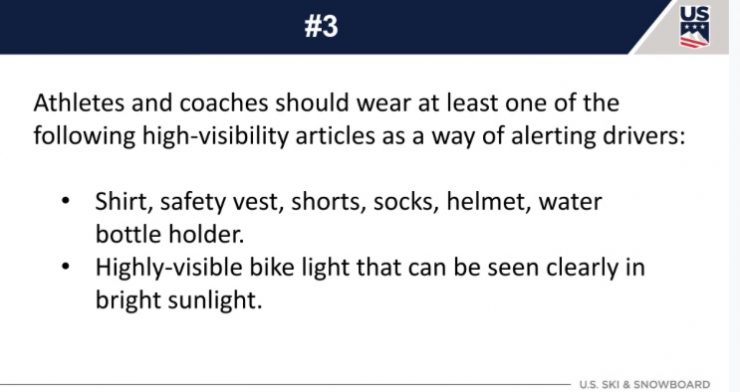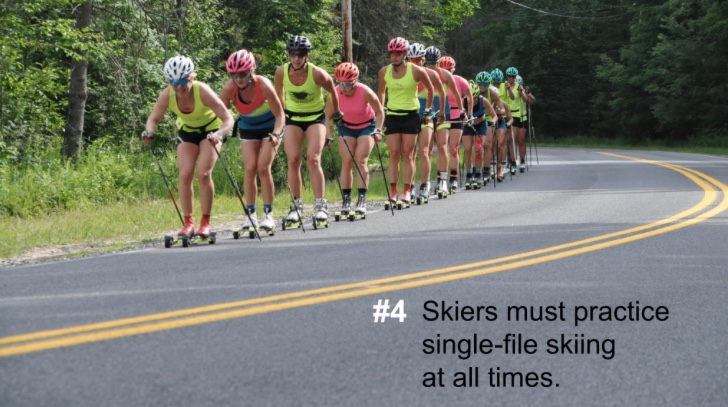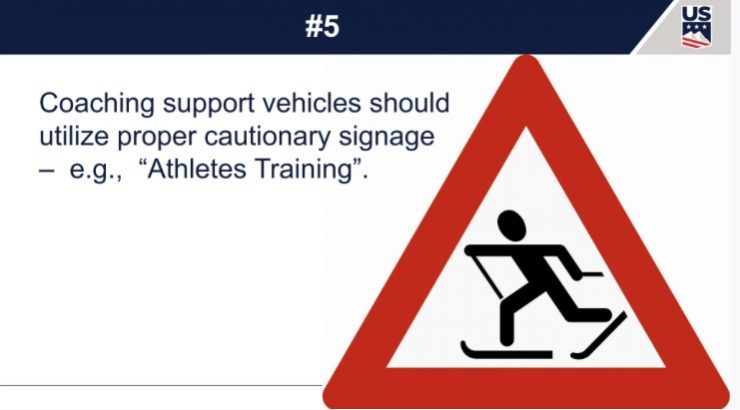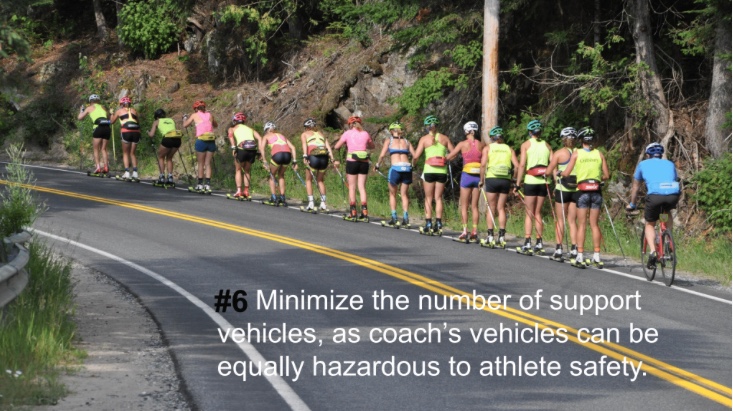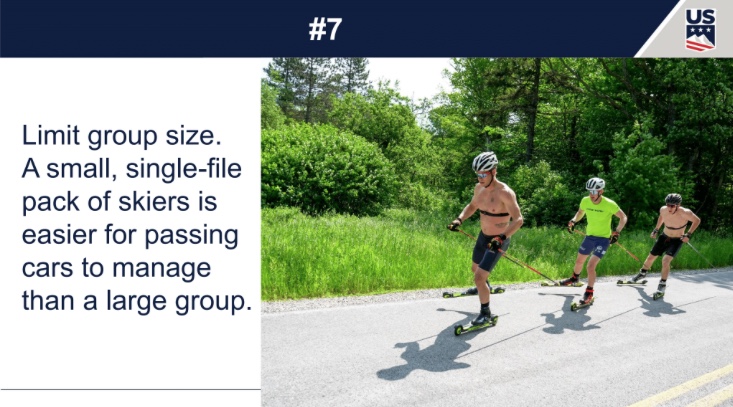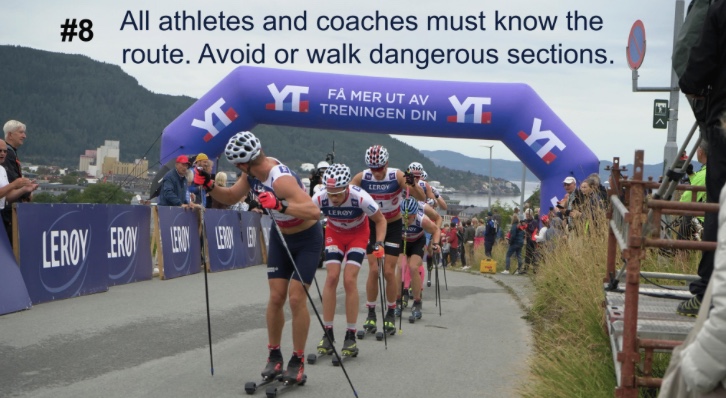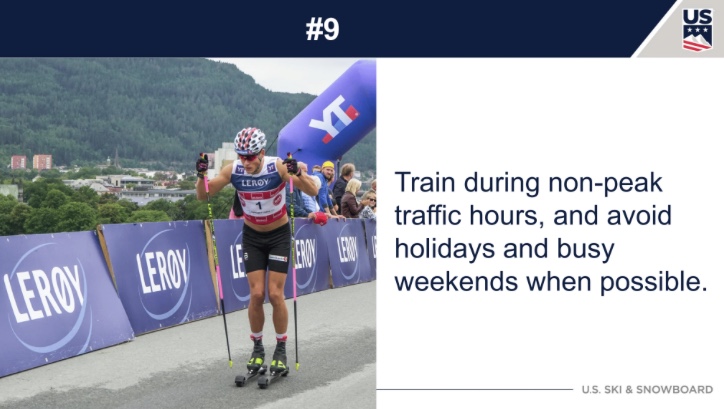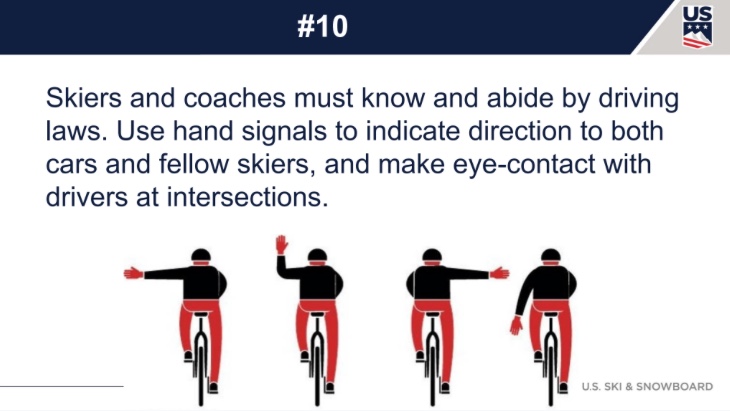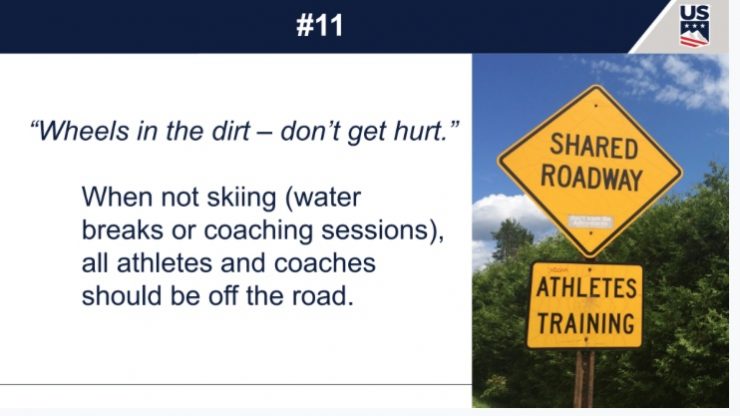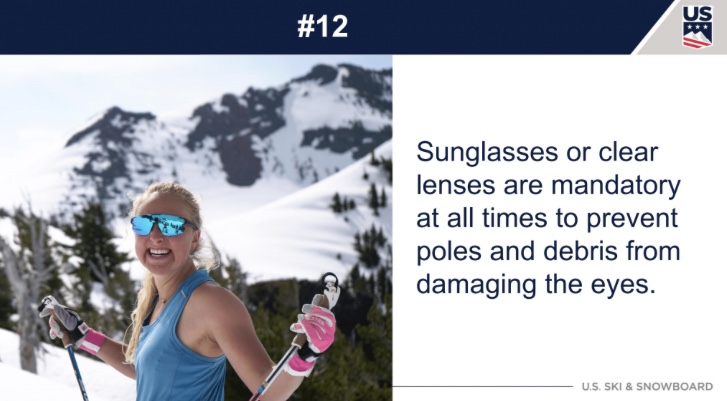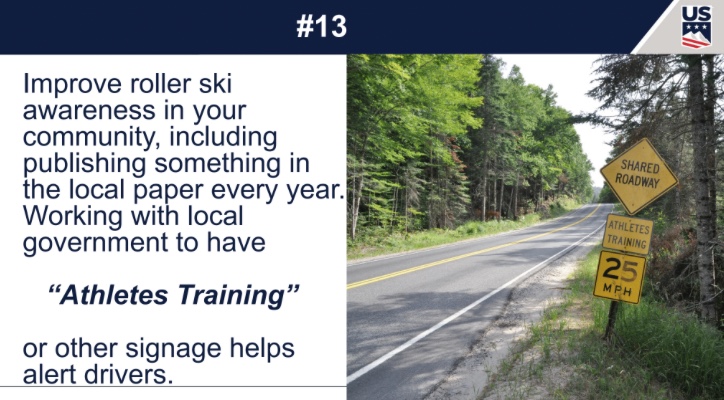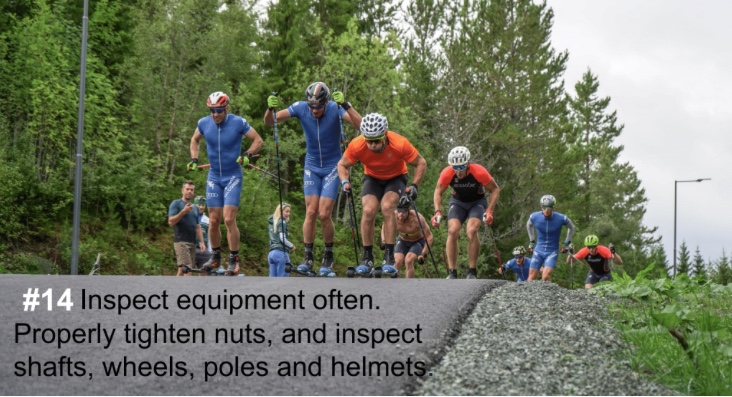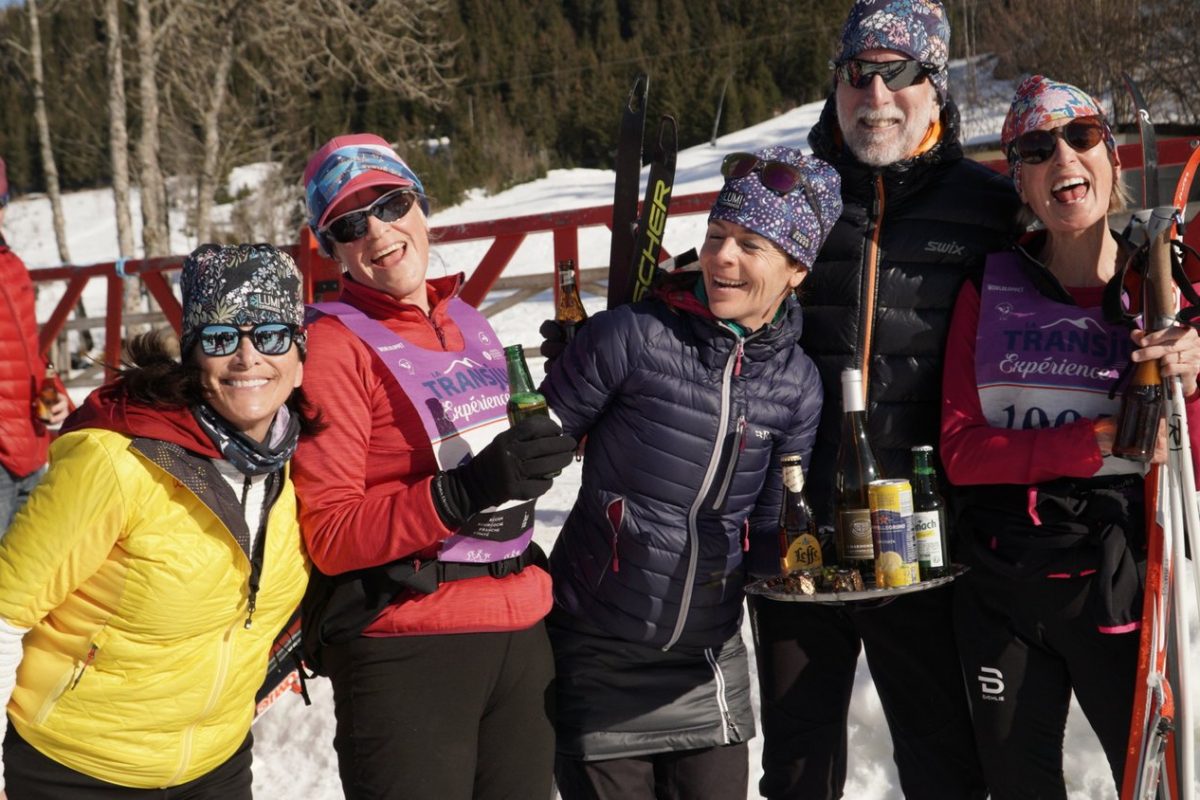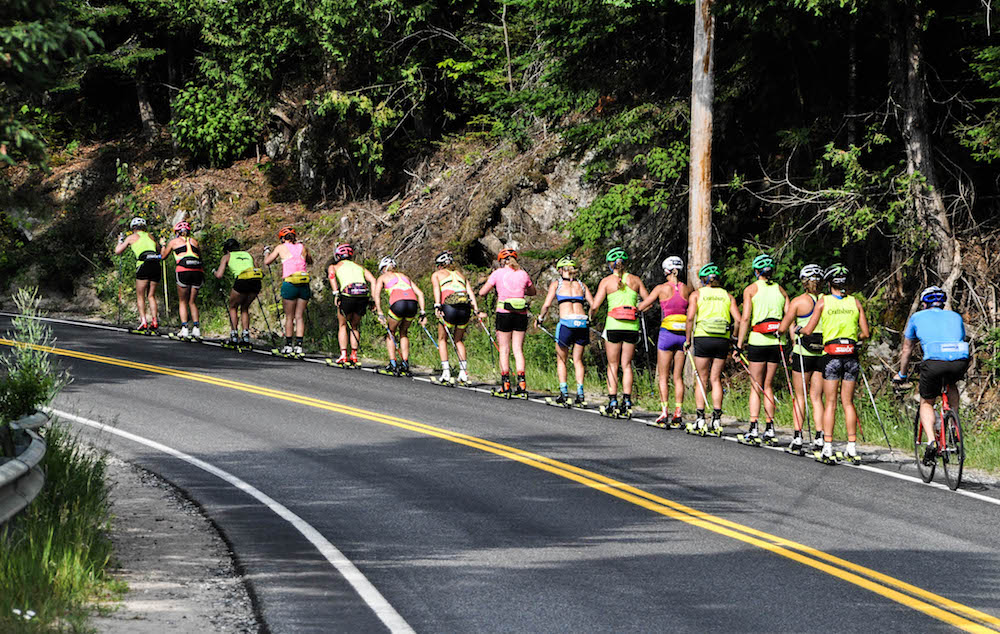
Due to the start of the rollerski season, we are republishing this story to help promote best practices when rollerskiing on the open road.
Making yourself visible while rollerskiing is a must. And with a recent reminder from U.S. Ski Team (USST) World Cup coach Matt Whitcomb, the time of year has come when many skiers are training on roads in lower angle sunlight as we tip away from the Sun in the Northern Hemisphere. Below we are including the rollerskiing safety bullet-points and slides from Whitcomb’s presentation on the topic at the recent National Coaches’ Symposium.
Before that, we recognize that rollerskiing on roads open to car traffic poses risks. For several years now, rollerskiers have been encouraged to wear high-visibility shirts. The next progression in rollerskiing safety will likely come from the cycling community where researchers have studied how cyclists can become even more visible on the road. The safety debate has evolved beyond simply wearing a high-visibility shirt to further exploring “static-vs.-active dynamic” means to make drivers aware of athletes on the road. In other words, it appears high-visibility clothing worn on active dynamic parts of the body while cycling, like the legs and feet, more effectively alerts drivers. The same goes for rear-facing bike lights: blinking lights are safer than static lights. (Any light is safer than no light.)
For now, we don’t know of any ski-specific water bottle carrier manufactured with simple attachments for a lightweight blinking light. We imagine that with some simple modifications, affixing a blinking light would be no big deal.
Here’s a Wall Street Journal Video summarizing some of the 2017 findings to improve cyclist visibility.
Current recommendations from the USST on rollerski safety.
The U.S. Cross Country Ski Team is determined to win more Olympic medals. To do this, we all must train hard and smart. For us to move forward as a nation, we seek to keep every member of our skiing community as safe as possible while roller skiing. Safety must be the primary consideration of every roller ski session. No exceptions. No mistakes.
The following is the roller ski safety protocol created by athletes and coaches of the U.S. Ski Team.
- Before a skier can share the road, they must be able to snowplow, stop quickly, and maneuver their skis to avoid hazards. The skier must be comfortable skiing off the road into the dirt or grass when necessary.
- An approved helmet in good condition must be worn at all times while roller skiing.
- Athletes and coaches should wear at least one of the following high-visibility articles as a way of alerting drivers:
- Shirt, safety vest, shorts, socks, helmet, water bottle holder.
- Highly visible bike light that can be seen clearly in bright sunlight.
- Skiers must practice single-file skiing at all times.
- Coaching support vehicles should utilize proper cautionary signage – g., “Athletes Training”.
- Minimize the number of support vehicles, as coach’s vehicles can be equally hazardous to athlete safety.
- Limit group size. A small, single-file pack of skiers is easier for passing cars to manage than a large group.
- All athletes and coaches must know the route. Avoid or walk dangerous sections.
- Train during non-peak traffic hours, and avoid holidays and busy weekends when possible.
- Skiers and coaches must know and abide by driving laws. Use hand signals to indicate direction to both cars and fellow skiers, and make eye contact with drivers at intersections.
- When not skiing (water breaks or coaching sessions), all athletes and coaches should be off the road. Wheels in the dirt – don’t get hurt.
- Sunglasses or clear lenses are mandatory at all times to prevent poles and debris from damaging the eyes.
- Improve roller ski awareness in your community, including publishing something in the local paper every year. Working with the local government to have “Athletes Training” or other signage helps alert drivers.
- Inspect equipment often. Properly tighten nuts, and inspect wheels, shafts, poles, and helmets.

